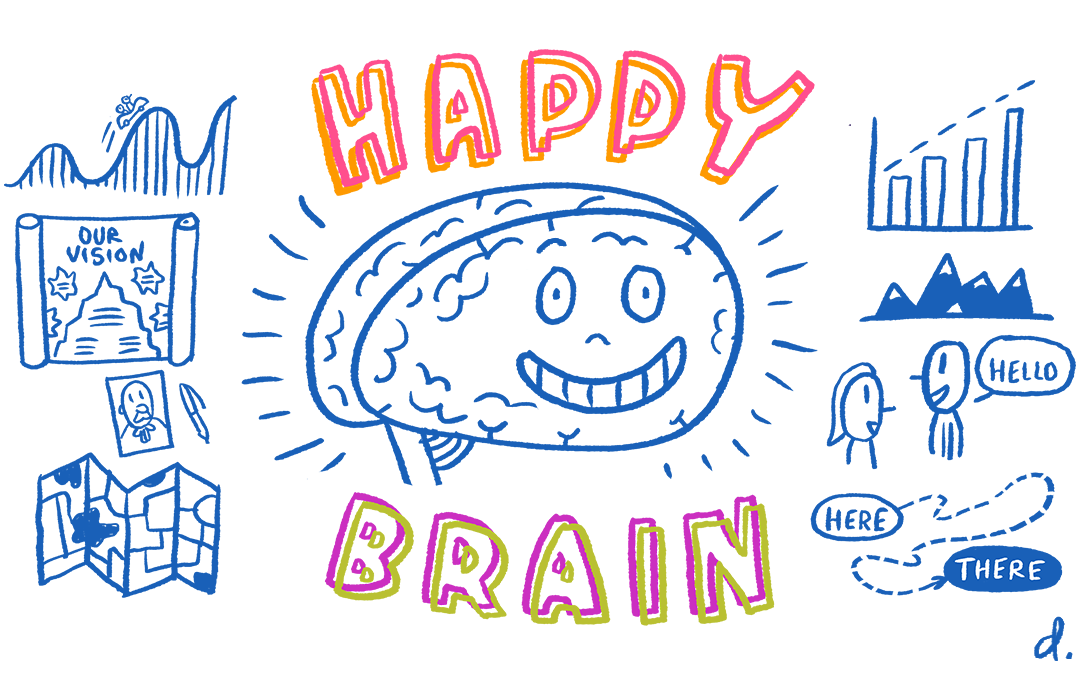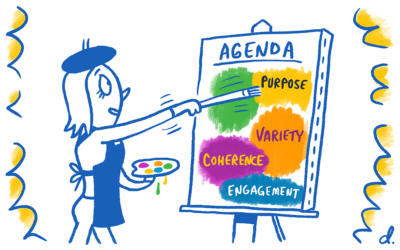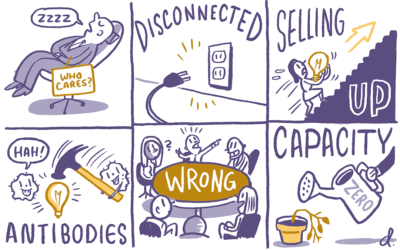Lessons from Cognitive Science
Many of the books on graphic recording and visual storytelling start with a rather desperate sounding chapter on why pictures matter in the serious world of business. I skip over these chapters as quickly as possible. If I sound impatient it’s because I feel that it should be obvious by now that visuals are essential tools, cognitive science has proved it, and it’s time to stop pleading and start doing.
Good Enough for Amazon
I’ve worked with some of the world’s most innovative companies––including Amazon–– where I helped set up a visual consulting practice to strategize with leaders and solve problems.
I would never facilitate any kind of strategy conversation without incorporating visuals – because they just work.
Why? Here are a few reasons:
1 – Pictures help people make meaning of complex information
2- Visuals go directly into your consciousness and stick
3 – Images are processed 60,000 times faster than written text (according to research by 3M)
4 – When you see the big picture, for example, a drawing of a system or process, it allows people to have a conversation and identify ways to make small changes that will have a big impact
5 – A shared visual gives everyone on the team a common mental model to work within
People think better when we externalize data – meaning take the ideas out of our heads and put them into a shared space––a picture––where they can be augmented and manipulated.
In her book, The Extended Mind, science writer Annie Murphy Paul calls this “cognitive offloading,” and says, “We put part of the mental burden down when we delegate the representation of the information to physical space.”
When I talk about pictures I don’t mean careful renderings that take concentration and a long time to draw. Rather, I mean drawings that can be scribbled out quickly.
For example, imagine two rough, squiggly boxes drawn on a whiteboard, a green one on the left, and a red one on the right. A team writes all their future business aspirations in the green box, then writes all their pains, concerns, and potential disasters in the red one.
By filling in these boxes one at a time, pausing to reflect on the information and insights, the team begins functioning with focus and clarity– rather than flitting from topic to topic as we do in most business meetings.
It feels almost silly to describe an exercise so simple, yet I share it because thinking together in this way really works.
It results in team alignment, which is a struggle to attain for most organizations. Pictures make it happen faster and easier than it would otherwise.
And the picture that results from such an exercise is what Paul calls a “stable external artifact,” which is a cognitive tool in itself. She says the artifact, “extends our ability to think and see (our ideas) far more clearly and concretely.”
I couldn’t agree more because I’ve seen it work. Hopefully now you’re as impatient as me to get busy using pictures––to enhance your cognitive abilities. Reach out if you’d like to explore it together.




